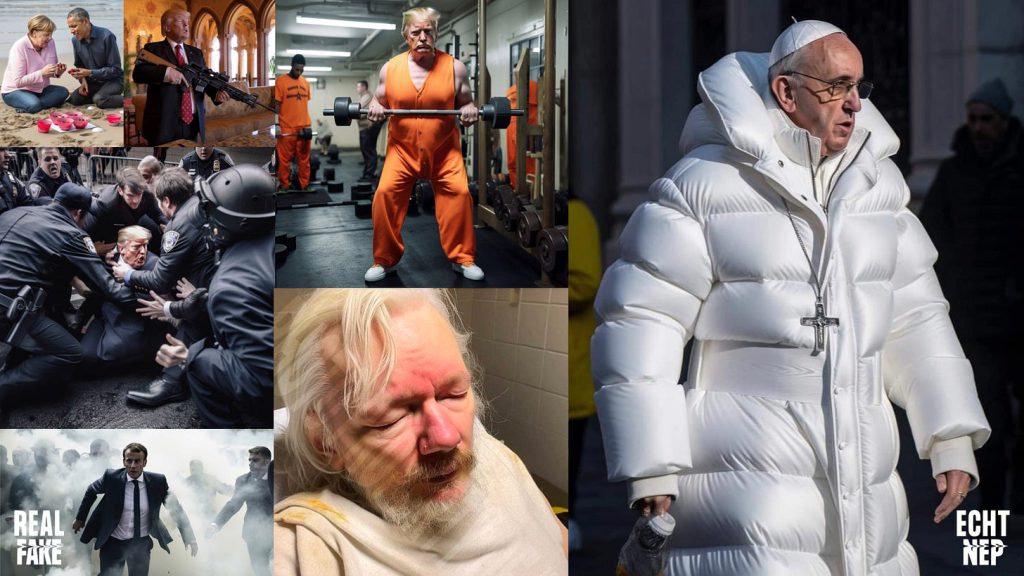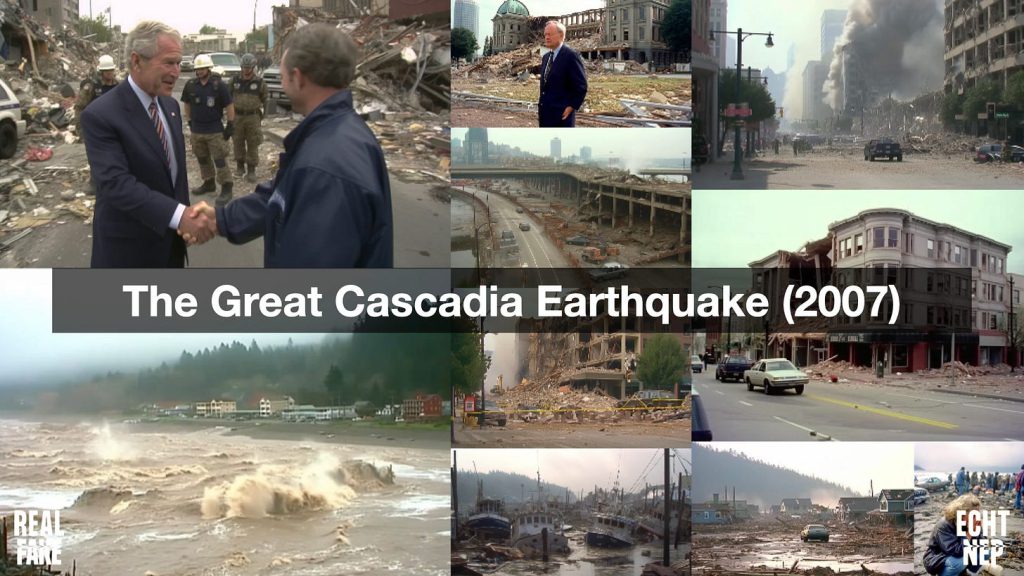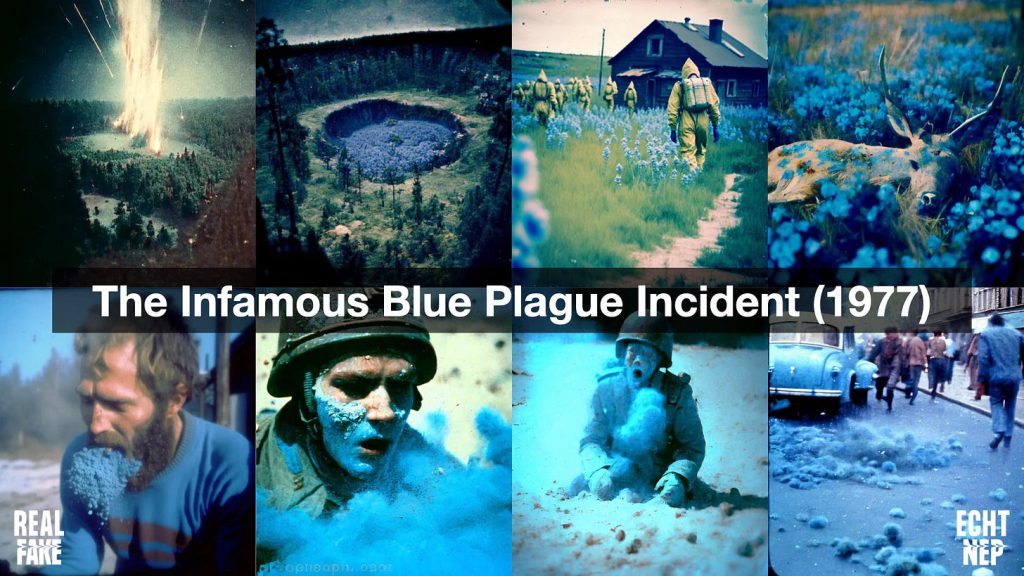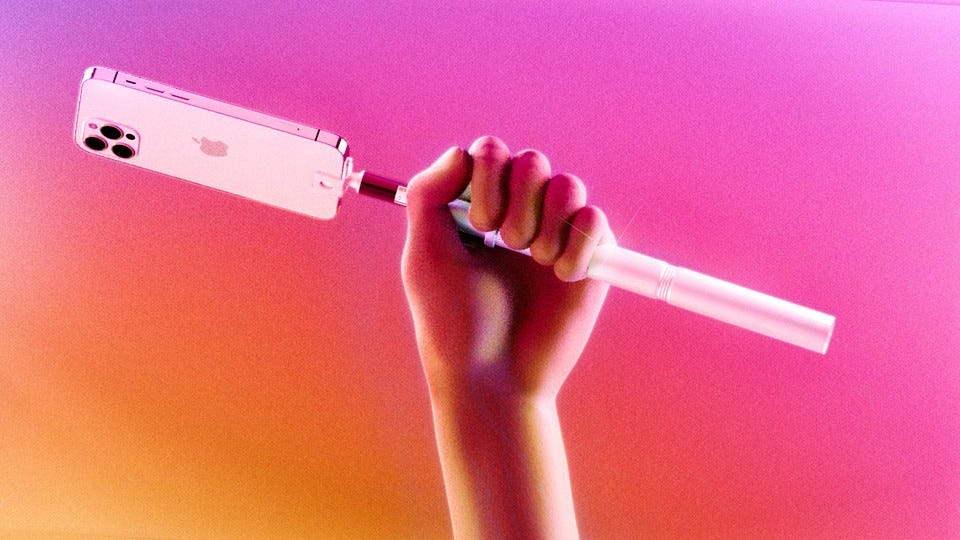Seeing Is No Longer Believing
What do Donald Trump in an orange prison jumpsuit, Pope Francis parading in a huge white down jacket, and Julian Assange appearing more dead than alive have in common? These photos have been rapidly circulating on social media over the past week. However, the images are purely visual fiction generated using AI image generator Midjourney. We are falling for these AI hoaxes. It is a harbinger of the tsunami of dis- and misinformation that is coming our way.

Thierry Baudet retweeted this weekend a shocking photo of Julian Assange, the Australian founder of the whistleblowing platform WikiLeaks. The photo was secretly taken from his cell. Assange is obviously in bad shape. He appears to be dying. The thousands of comments under the photo do not lie: “This is inhuman,” “Unreal. Painful to see.” and “This is just outrageous. For telling the world the truth….” The photo is fake and generated using AI. The photo shows the text “Property of E.” It is the well-known trademark of The Errant Friend, a well-known fraudster who has created and distributed fake images before. For example, the fake photo in which a Donald Trump kneels and prays in a church, a photo that was notoriously distributed by Trump himself on his own social network Social Truth as being real, was also created by him.

Last week, we fell massively into various AI hoaxes. Before Pope Francis was hospitalized, a photo of him going viral showed him wearing an overly trendy white puffer jacket. Fake images of Donald Trump’s violent arrest also circulated, French President Macron had to run for his life in a demonstration that got out of hand, and Barack Obama baked mud pies with Angela Merkel. In addition to people experiencing things that never happened to them in reality, entire events are also fictionalized. For example, images are circulated online of the infamous Blue Plague that plagued Russia in 1977, of the 2012 solar superstorm that caused worldwide blackouts and the earthquake that occurred on April 3, 2001 along the west coast of North America in which more than 8,159 people lost their lives. All are pseudo-events generated entirely by artificial intelligence. Online, they are called fakumentary. Even AI detection tools don’t realize they are faked history. For example, Hugging Face manages to guarantee with 87% certainty that some photos of the earthquake are real. An additional problem is that it also works the other way. Existing events, such as the Apollo moon landing, are debunked with AI images, giving new life to old conspiracy theories.

We are entering uncharted territory. Last week’s many hyper-realistic fake images symbolize a turning point in the development of generative AI. As of now, it is no longer possible for the layman to distinguish fact from fiction, original from copy and fake from real. All of us grew up with the idea: “seeing is believing.” This wisdom no longer holds true. You can no longer blindly trust the naked eye. Last year, Europol published a report stating that by 2026, more than 90% of all information on the Internet will be generated by artificial intelligence. It is a warning of the infocalypse that is upon us. AI photos are the first salvo to be unloaded in this reality war. Now they are still photographs, in six months they will be moving images that will no longer be distinguishable from the real thing due to the exponential growth of this type of technology. Thanks to the democratization of AI, any creative mind can now create its own reality. By simply typing text into the command prompt, artificial intelligence colors in the rest. This raises serious questions about the authenticity of information on the Internet and how technologies such as AI affect our ability to distinguish truth from fiction. In the hands of malicious actors, AI is a superpower. With the spread of Assange’s fake image, Baudet shows how easy it is to use this technology as a weapon for propaganda purposes in order to undermine the foundations of our democracy.
It is not primarily the fake AI images themselves that we should fear, but for the way they pollute the information ecosystem and create an alternate reality. The danger is not so much that the lie is elevated to truth, but that the credibility of the truth is compromised. The lie does not have to be convincing; if it is repeated and spread often enough, people naturally become confused. Scientists call this phenomenon liar’s dividend. This advantage to the liar plays into the hands of malcontents: anyone can now dismiss anything as a lie, fake news, a conspiracy theory or a deepfake. Thus, we are conditioned to develop an apathy toward reality. If people are constantly inundated with misinformation and disinformation on a large scale, then it becomes increasingly difficult to distinguish real from fake, and there is a good chance that one will put up a wall around one’s own rightness and become indifferent to objective reality. Strengthened by the algorithms of social media, people retreat more and more into their own bubble of reality. In the process, this form of computer kitsch easily hits people in the underbelly. Where before the press photographer still had to go out and shoot the perfect picture, now the drama is simply fantasized together by AI manipulation and the sensational potential of these fake images is enormous. The bottom line is that there is no longer one shared truth, which poses an existential threat to our democracy.
Regulation and legislation regarding this kind of new technology is hopelessly behind. In the short term, we need not expect solutions from this. We have to do it ourselves. In this age of digital hallucination, a skeptical attitude is the best defense. It is wise to default to trusting nothing that appears on the Internet.
The Uncanny Valley Of Everything
“AI is going to write your emails for you. It’s going to generate your vacation travel itineraries and tell you which restaurants in Lisbon are best. It’s going to generate a pitch deck for a work meeting, then summarize that meeting for you. It’s going to turn you into an artist, a designer, an architect, an interior decorator. It’s going to replace your therapist, your assistant, and probably your boss. […] Some people interpret this prediction as sudden utopian freedom: Anyone can produce a facsimile of any creative labor instantly with the machine. Others see it as completely dystopian, the AI replacing human artists, writers, musicians, and office workers. […] In the world of Full Generative AI, as the tech companies are proposing, everything falls into the uncanny valley.”
The Age Of Average
“When every supermarket aisle looks like a sea of sameness, when every category abides by the same conventions, when every industry has converged on its own singular style, bold brands and courageous companies have the chance to chart a different course. To be different, distinctive and disruptive. So, this is your call to arms. Whether you’re in film or fashion, media or marketing, architecture, automotive or advertising, it doesn’t matter. Our visual culture is flatlining and the only cure is creativity. It’s time to cast aside conformity. It’s time to exorcise the expected. It’s time to decline the indistinguishable.”
AI And The American Smile

Everybody has in Midjourney the same kind of smile because the underlying database references the fake American smile. Sad to see how AI destroys culture. “In flattening the diversity of facial expressions of civilizations around the world AI had collapsed the spectrum of history, culture, photography, and emotion concepts into a singular, monolithic perspective. It presented a false visual narrative about the universality of something that in the real world — where real humans have lived and created culture, expression, and meaning for hundreds of thousands of years — is anything but uniform.”
The Influencer Industry Is Having an Existential Crisis

“People who make their living by sharing content on giant social-media platforms have tried to strike, organize, and even unionize, but they don’t have much to show for it.”

 English | EN
English | EN 